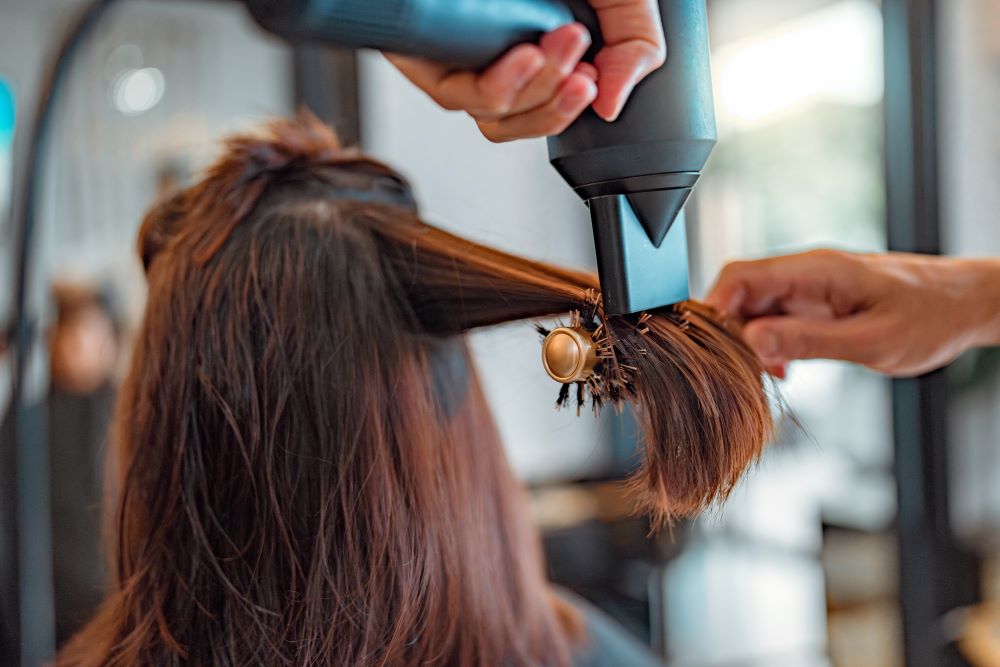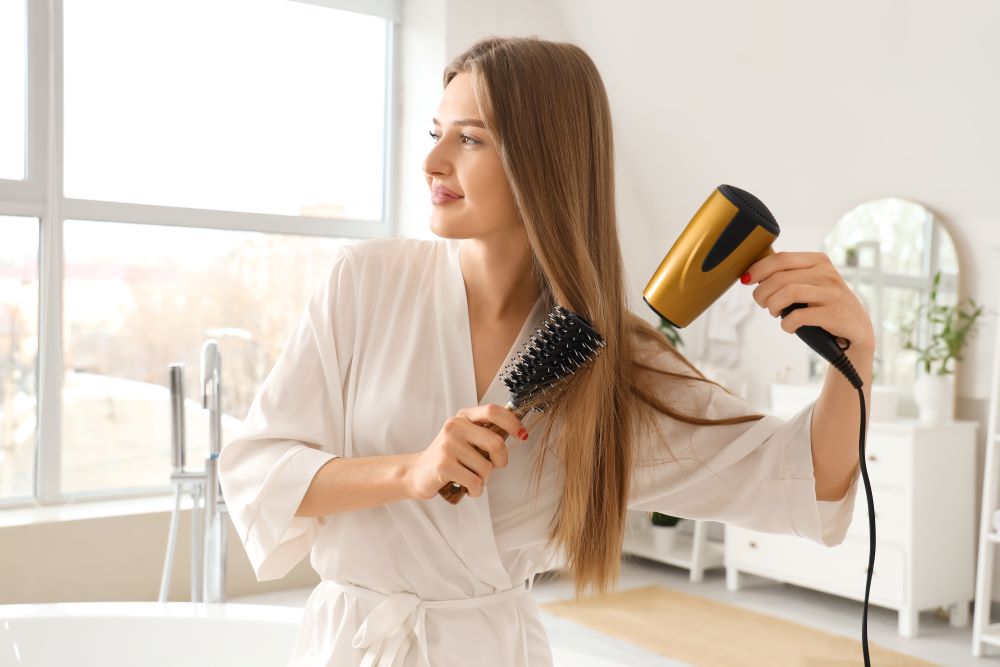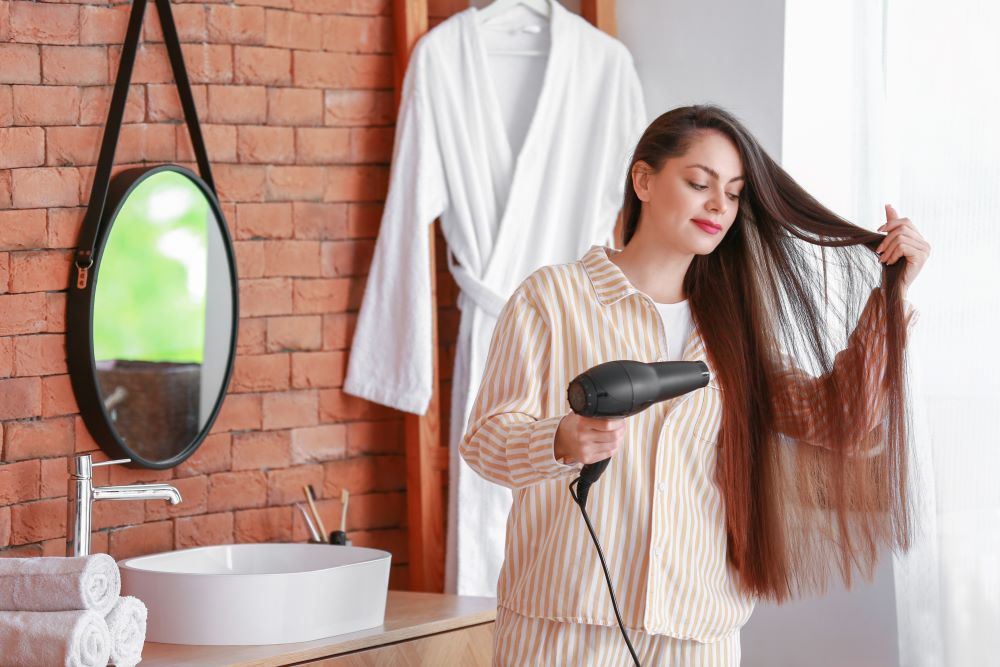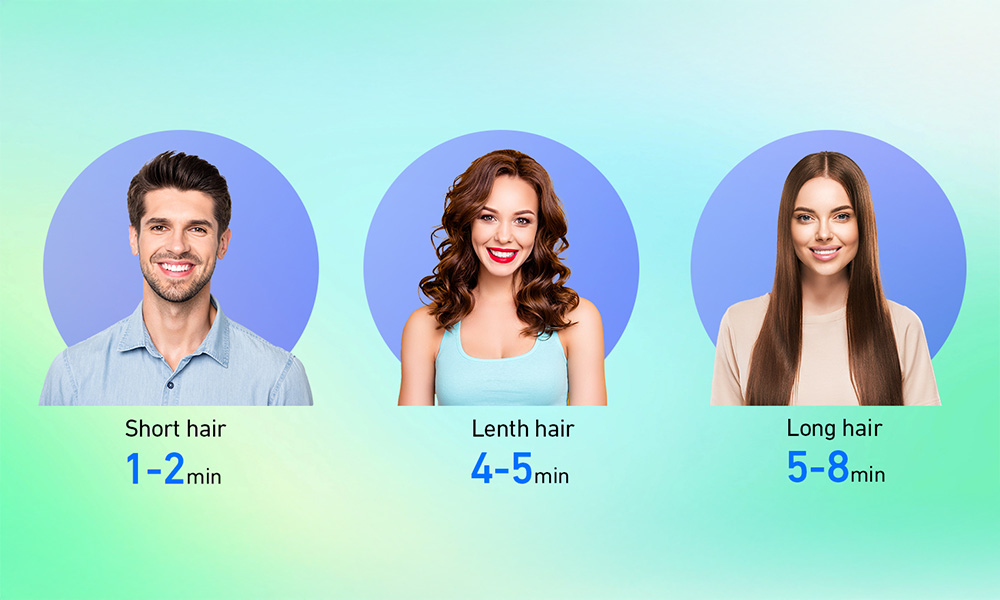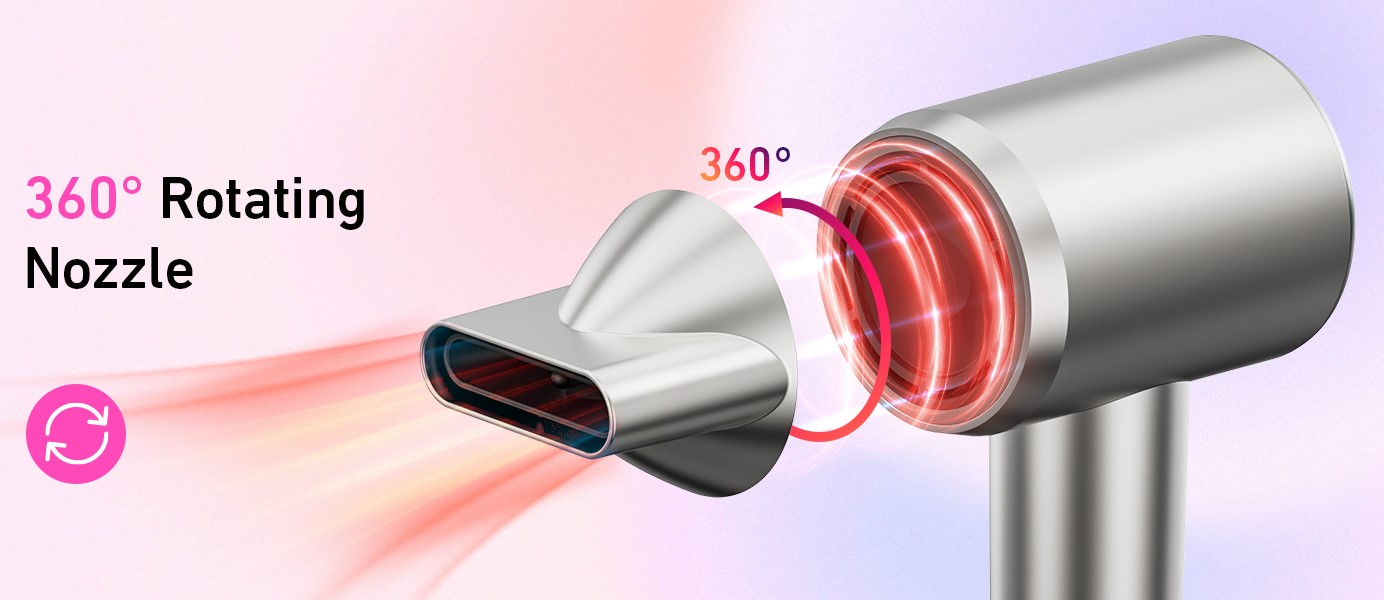
- Home
- Hair Dryer
- Hair Care Tips
- Understanding Hair Types and Expert Care Tips
Understanding Hair Types and Expert Care Tips
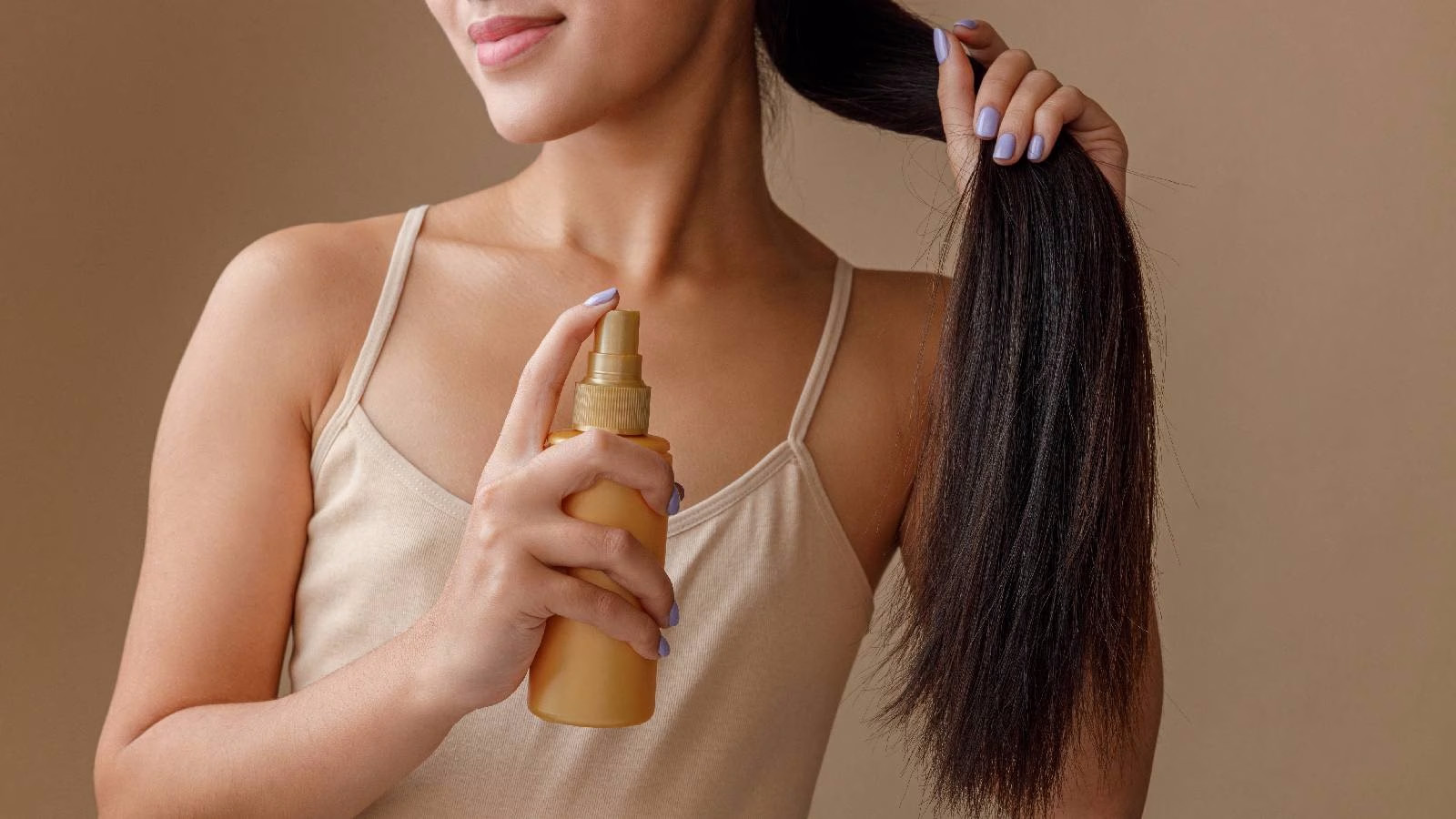
Hair is a defining feature that plays a significant role in one’s appearance and confidence. However, understanding your hair type and knowing how to care for it is crucial to maintaining healthy, vibrant locks. With countless hair products and styling techniques available, it can be overwhelming to figure out what works best for your hair. This guide aims to help you identify your hair type, understand its unique needs, and provide expert tips for proper care.
1. Identifying Your Hair Type

Before diving into care tips, it’s essential to understand the different hair types. Hair type classification generally depends on texture, porosity, density, and curl pattern. Here’s a breakdown:
1.1 Hair Texture
Hair texture refers to the thickness or diameter of individual hair strands. It is commonly categorized into three types:
Fine Hair: This hair type is thin and delicate, making it prone to breakage and a lack of volume. It often feels silky to the touch and can be challenging to style due to its tendency to fall flat.
Medium Hair: Medium or “normal” hair is thicker than fine hair and has more volume. It holds styles better and is generally more resilient to damage.
Coarse Hair: Coarse hair is thick and strong, often with a rough texture. It tends to be more resistant to styling but can also be more prone to frizz and dryness.
1.2 Hair Porosity
Porosity refers to how well your hair absorbs and retains moisture. It is categorized into three levels:
Low Porosity: Hair cuticles are tightly closed, making it difficult for moisture to penetrate. Products often sit on the hair surface rather than being absorbed, leading to a potential buildup.
Medium Porosity: The cuticles are slightly open, allowing for optimal moisture absorption and retention. This type generally requires minimal maintenance and responds well to various products.
High Porosity: The cuticles are widely open, often due to damage or genetics. This hair type absorbs moisture quickly but loses it just as fast, making it prone to dryness, frizz, and breakage.
1.3 Hair Density
Density refers to how many strands of hair you have per square inch on your scalp. It can be classified as:
Low Density: Fewer hair strands, which can make the scalp more visible. Styling for volume is often a priority.
Medium Density: The scalp is not easily visible, and the hair appears full.
High Density: A lot of hair strands, leading to thick and voluminous hair. This type can sometimes be challenging to manage due to its bulk.
1.4 Curl Pattern
The curl pattern is a key factor in determining hair type and is classified into four main categories:
Type 1 (Straight Hair): Hair that has no curl and tends to be shiny and oily due to the ease with which natural oils travel down the hair shaft.
Type 2 (Wavy Hair): Hair that has a natural wave, ranging from loose to more defined waves. It can be prone to frizz.
Type 3 (Curly Hair): Hair with distinct curls that can vary from loose curls to tight ringlets. It tends to be dry and requires ample moisture.
Type 4 (Coily/Kinky Hair): Hair with tight coils or zig-zag patterns. It is the most fragile and prone to dryness due to the natural curl preventing oils from traveling down the hair shaft.
2. Caring for Different Hair Types
Now that you’ve identified your hair type, it’s time to understand how to care for it. Each hair type has unique needs, and using the right products and techniques is crucial for maintaining healthy hair.
2.1 Caring for Fine Hair
Challenges: Fine hair is prone to oiliness, lack of volume, and breakage.
Care Tips:
Use a Volumizing Shampoo: Opt for a lightweight, volumizing shampoo that won’t weigh down your hair.
Condition Sparingly: Apply conditioner only to the ends of your hair to avoid greasiness at the roots.
Avoid Heavy Products: Steer clear of heavy oils and creams that can weigh your hair down. Instead, use a lightweight mousse or spray.
Gentle Heat Styling: If you use heat styling tools, keep the temperature low to avoid damage.
Regular Trims: Trim your hair regularly to prevent split ends and maintain its health.
2.2 Caring for Medium Hair
Challenges: Medium hair is generally low-maintenance but can be prone to frizz and dryness.
Care Tips:
Balanced Shampoo and Conditioner: Use a balanced shampoo and conditioner that nourishes without weighing down your hair.
Heat Protection: Always use a heat protectant when styling with hot tools to prevent damage.
Hydrating Masks: Incorporate hydrating hair masks into your routine once a week to maintain moisture levels.
Anti-Frizz Products: If your hair is prone to frizz, consider using anti-frizz serums or creams.
2.3 Caring for Coarse Hair
Challenges: Coarse hair can be dry, frizzy, and challenging to style.
Care Tips:
Moisturizing Shampoo and Conditioner: Use products specifically formulated for coarse hair to provide the extra moisture it needs.
Deep Conditioning Treatments: Deep condition your hair weekly to keep it soft and manageable.
Leave-In Conditioner: A leave-in conditioner can help detangle and provide additional moisture throughout the day.
Avoid Over-Washing: Washing your hair too often can strip it of its natural oils, leading to dryness.
Use Oils: Incorporate natural oils like argan or coconut oil into your routine to add shine and reduce frizz.
2.4 Caring for Low Porosity Hair
Challenges: Low porosity hair can be difficult to moisturize, and products often build up on the surface.
Care Tips:
Clarifying Shampoo: Use a clarifying shampoo regularly to remove buildup and allow moisture to penetrate the hair shaft.
Warm Water: Wash your hair with warm water to help open the cuticles and allow products to be absorbed.
Lightweight Products: Use lightweight, water-based products that won’t sit on the hair’s surface.
Steam Treatments: Incorporate steam treatments into your routine to help open up the cuticles and allow for better moisture absorption.
2.5 Caring for High Porosity Hair
Challenges: High porosity hair absorbs moisture quickly but also loses it fast, leading to dryness and frizz.
Care Tips:
Moisturizing Products: Use products rich in moisture and protein to strengthen and hydrate your hair.
Sealing Oils: After moisturizing, use sealing oils like castor oil or shea butter to lock in moisture.
Avoid Heat: Minimize the use of heat styling tools, as they can further damage the cuticles.
Protein Treatments: Regular protein treatments can help strengthen and repair the hair.
2.6 Caring for Straight Hair (Type 1)
Challenges: Straight hair tends to get oily quickly and lacks volume.
Care Tips:
Oil-Control Shampoo: Use a shampoo formulated to control oil without stripping the hair of its natural moisture.
Dry Shampoo: Incorporate dry shampoo into your routine to extend the time between washes.
Volume-Boosting Products: Use volumizing sprays or mousses to add body to your hair.
Avoid Over-Brushing: Over-brushing can stimulate oil production, so brush your hair sparingly.
2.7 Caring for Wavy Hair (Type 2)
Challenges: Wavy hair can be frizzy and lose its definition easily.
Care Tips:
Sulfate-Free Shampoo: Use a sulfate-free shampoo to prevent stripping your hair of its natural oils.
Lightweight Conditioner: Apply a lightweight conditioner to avoid weighing down your waves.
Air-Drying: Allow your hair to air dry to enhance its natural wave pattern.
Anti-Frizz Serum: Use an anti-frizz serum to keep your waves defined and frizz-free.
2.8 Caring for Curly Hair (Type 3)
Challenges: Curly hair is prone to dryness and requires ample moisture to maintain its shape and definition.
Care Tips:
Moisturizing Shampoo and Conditioner: Choose products specifically designed for curly hair to provide the necessary moisture.
Co-Washing: Consider co-washing (washing your hair with conditioner instead of shampoo) to avoid stripping your hair of its natural oils.
Leave-In Conditioner: A leave-in conditioner can help maintain moisture levels and keep your curls defined.
Detangling: Use a wide-tooth comb to detangle your hair while it’s still wet to prevent breakage.
2.9 Caring for Coily/Kinky Hair (Type 4)
Challenges: Coily hair is the most fragile and prone to dryness, breakage, and shrinkage.
Care Tips:
Moisture-Rich Products: Use moisture-rich shampoos, conditioners, and leave-in products to keep your hair hydrated.
Protective Styles: Consider protective styles like braids or twists to minimize manipulation and reduce breakage.
Avoid Heat: Limit the use of heat styling tools to prevent damage.
Regular Trims: Trim your hair regularly to maintain its health and prevent split ends.
3. Hair Care Myths and Misconceptions
In the quest for healthy hair, many myths and misconceptions can lead you astray. Here, we debunk some common hair care myths:
3.1 Myth: Frequent Trims Make Hair Grow Faster
Truth: Trimming your hair regularly helps maintain its health by preventing split ends, but it doesn’t affect the rate of growth. Hair growth is primarily determined by genetics and overall health.
3.2 Myth: Shampooing Daily is Necessary
Truth: Washing your hair daily can strip it of its natural oils, leading to dryness and damage. Most hair types benefit from washing 2-3 times a week, depending on individual needs.
3.3 Myth: Brushing 100 Strokes a Day Makes Hair Healthier
Truth: Over-brushing can actually damage your hair, leading to breakage and split ends. It’s best to brush gently and as needed to detangle and style your hair.
3.4 Myth: Air Drying is Always Better Than Blow Drying
Truth: While air drying can be gentler on your hair, it can also lead to frizz and a lack of volume, especially for certain hair types. If you use a blow dryer, opt for a lower heat setting and use a heat protectant to minimize damage.
4. Choosing the Right Hair Products

Selecting the right hair products is crucial for maintaining healthy hair. Here are some tips for choosing products based on your hair type:
4.1 Shampoo and Conditioner
Fine Hair: Opt for volumizing shampoos and lightweight conditioners that won’t weigh your hair down.
Coarse Hair: Use moisturizing shampoos and conditioners that provide hydration and softness.
Curly Hair: Choose sulfate-free shampoos and conditioners rich in moisture to enhance curl definition.
4.2 Styling Products
Fine Hair: Use lightweight mousses or sprays to add volume without adding weight.
Wavy Hair: Opt for curl-enhancing creams or gels to define waves and reduce frizz.
Coily Hair: Use thick creams or butters to lock in moisture and maintain curl patterns.
4.3 Heat Protectants
Always use a heat protectant before styling with hot tools. Look for products that offer protection up to 450°F and suit your hair type.
5. Healthy Hair Habits
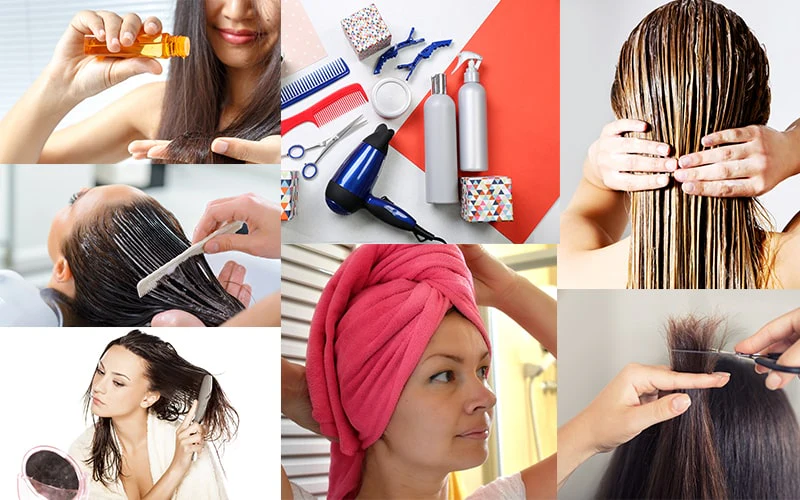
In addition to using the right products, adopting healthy hair habits can make a significant difference in the condition of your hair. Here are some tips:
5.1 Regular Trims
Getting regular trims every 6-8 weeks can help prevent split ends and maintain your hair’s health.
5.2 Proper Nutrition
Your diet plays a crucial role in hair health. Ensure you’re getting enough protein, vitamins, and minerals to support healthy hair growth.
5.3 Avoiding Heat Damage
Limit the use of heat styling tools and always use a heat protectant when you do. Let your hair air dry whenever possible.
5.4 Protecting Hair at Night
Sleep on a silk pillowcase or use a silk hair wrap to reduce friction and prevent breakage while you sleep.
5.5 Managing Stress
Stress can lead to hair loss and other hair-related issues. Practice stress management techniques like meditation, exercise, and proper sleep.
6. Latest Trends in Hair Care
The hair care industry is constantly evolving, with new products and techniques emerging regularly. Here are some of the latest trends to consider:
6.1 Scalp Care
Scalp care has become a significant focus in hair care, with products specifically designed to nourish and balance the scalp. A healthy scalp is essential for healthy hair growth.
6.2 Clean Beauty
More consumers are opting for clean, natural hair care products free from harmful chemicals like sulfates, parabens, and synthetic fragrances.
6.3 Custom Hair Care
Customizable hair care products tailored to your specific hair type and concerns are gaining popularity. These products offer personalized solutions for optimal hair health.
6.4 Heatless Styling
With a growing awareness of heat damage, many people are turning to heatless styling methods like overnight braids, rollers, or twist-outs to achieve curls and waves without the risk of damage.
Conclusion
Understanding your hair type and how to care for it is the first step towards maintaining healthy, beautiful hair. By following the expert tips outlined in this guide, you can create a hair care routine tailored to your unique needs. Remember that consistency is key—regular trims, proper nutrition, and using the right products will go a long way in keeping your hair in top condition. Stay informed about the latest trends in hair care to ensure your routine remains effective and up-to-date.
Healthy hair is not just about the products you use; it’s about understanding your hair and giving it the care it deserves. Whether your hair is fine, coarse, curly, or straight, with the right approach, you can achieve the hair of your dreams.
Popular Post

Ultimate Guide to Using a Hair Dryer with Nozzle for Styling
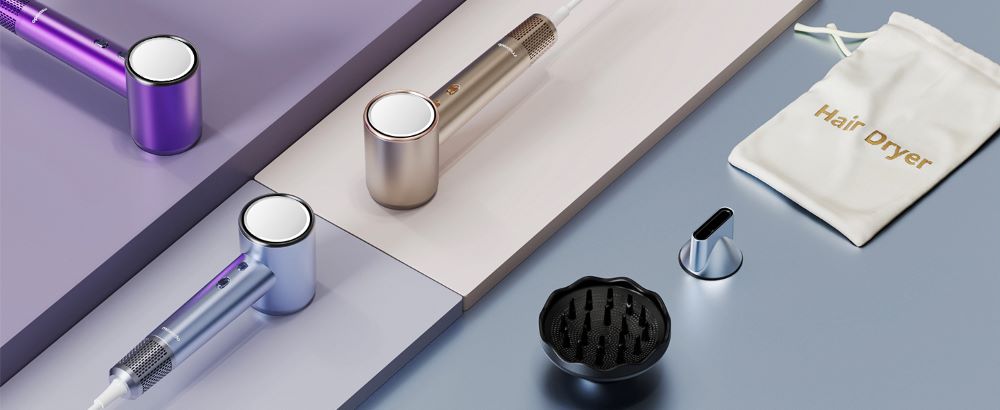
The Benefits of Using a Hair Dryer with a Diffuser
